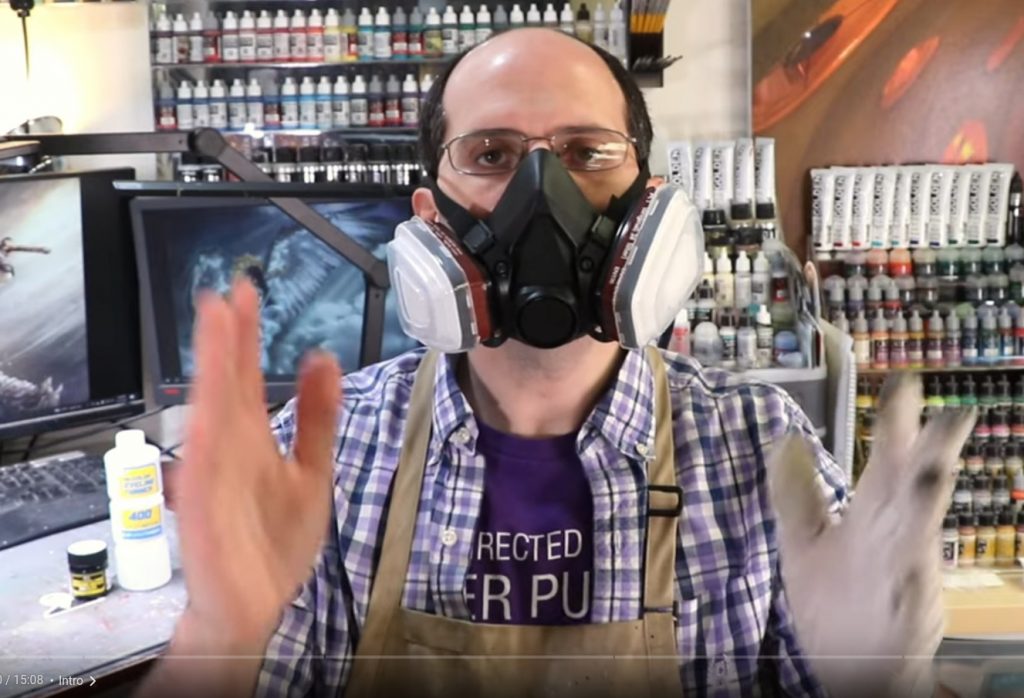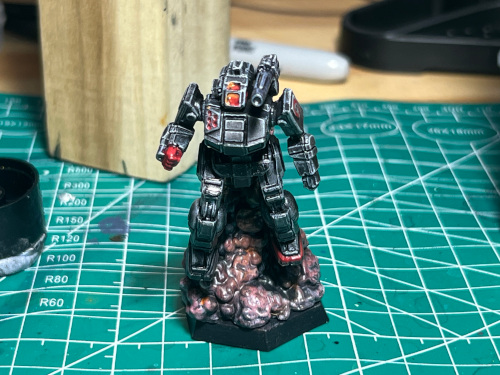Mr. Vince Venturella has released his Mr. Hobby Surfacer 1500 video, stating, “Best Primer Ever?” This video outlines using the enamel primer, how to make it produce good results, safety tips and information on using the product in an airbrush.
Vince is the man, everyone knows this. He’s talents are incredible and I am in complete agreement with his reasoning for using this stuff, as acrylic primers can be pretty wimpy compared to other types. If you’re making something as professional as he is, you need your primer to be the least of your worries.
But I’m still not going to use the stuff. Here’s why.

If you go back to my post on primers, I go through some of the issues I’ve experienced with different primers. The ones Vince outlines in his video are basically what I’ve experienced particularly with Army Painter airbrush primer — it’s too delicate, particularly on models with a ton of texture.
And it’s for this reason I’m not super interested in it. I want to know that what I prime can be taken all the way back to bare plastic without risking damage.
I typically use Vallejo polyurethane/acrylic primer through my airbrush in recent months. It is quite durable and doesn’t etch into the plastics of what I’m painting, meaning stripping is possible and won’t damage the product underneath.
At the opposite end, I’ve used hardware primers (Rustoleum and Krylon here) and these primers provide a hard, powerful enamel shell that is both very toothy (if you get matte) and very, very durable. I’ve found that these primers don’t come off for basically anything. Additionally, they will strip with cleaners like LA’s Totally Awesome. The biggest problem with these are they etch: Plastics like polystyrene (which is what GW and many other model brands are made from) will be melted a little bit to make sure the primer locks in. This gives it it’s durable coat but also means that if you need to strip the model for re-priming, you take some of the model with you. Eventually details will wipe off when the primer is removed, especially if done several times.

(Note: PVC plastic, like the kind Catalyst Game Labs currently uses on their models, does not react to these etching primers. You can use it pretty indiscriminately, basically.)
Mr. Surfacer 1500 is an enamel primer, too. It etches into the plastic and has some leveling properties (meaning it will flatten instead of bunch up in one spot) and is designed to go through the airbrush with some thinning. Vince talks about how he has never had a problem with this primer, that it goes on perfectly each time and dries in 15 minutes, which is incredible.
He’s been doing this a lot longer than I have so I trust that he’s experienced enough issues with polyurethane that he needed to move over to Mr. Surfacer. I can see the value in the leveling properties, since it will help prevent you from messing things up if you over spray a spot. With other primers, this will clog details and basically mess up what you’re doing. Then you have to strip it.
But I should hope it has those leveling properties. It’s an enamel, so that means it’s etching into the plastic just like the Rustoleum is. Stripping is going to be far riskier and detrimental than with the polyurethane.
And it’s for this reason I’m not super interested in it. I want to know that what I prime can be taken all the way back to bare plastic without risking damage.
For example, I had a Chaos Terminator that I used white ink to zenithal. When I applied some Speed Paint, the white ink reactivated and stripped all the other paint off the model above it. This basically guaranteed the whole paint job was ruined and I needed to start over as I couldn’t rely on the white ink not stripping everything I was doing. If I hadn’t used Vallejo acrylic/polyurethane, I’d have been pretty upset at the thought of damaging my model for basically no reason.
(Note: I switched to Golden High Flow Titanium White for zenithals after that. They’re basically regular acrylics that go well in an airbrush. Much safer.)
I would argue that this stuff is just Rustoleum you can put through an airbrush. That’s great — the issue with rattlecans is always how weather sensitive they are, and maybe you want to prime in bad weather.
But for me it’s not worth it. I want to be able to have the piece of mind that my miniatures are both primed and safe. And 95% of the time, polyurethane primers are more than durable enough to handle what I throw at them.
Leave a Reply